Wheat Disease Update - September 18, 2023
As we start the new wheat season in Oklahoma, some disease management strategies can be made this fall to reduce damage later in the season including cultural practices, genetic resistance, and chemical control.
Planting date: Much of the winter wheat sown in Oklahoma is used as a dual-purpose crop. In such a system, wheat is grazed by cattle from late fall through late winter/early spring and then harvested for grain in early summer. In a grain-only system, wheat is generally planted in October, but in a dual-purpose system wheat is planted in early to mid-September to maximize forage production. Early planted wheat is prone to infection by aphid-transmitted virus (i.e., barley yellow dwarf virus; Figure 1), and mite-transmitted viruses including wheat streak mosaic virus (WSMV; Figure 2) high plains wheat mosaic virus, and Triticum mosaic virus. Therefore, delaying planting (after October 1 in northern Oklahoma, and after October 15 in southern Oklahoma) will limit these diseases.
Figure 1. Symptoms of barley yellow dwarf (BYD) in a farmer field in Cleveland County, OK (photo taken on April 26, 2022). Aphids that transmit BYDV are shown in the picture on the right.
| Image | Caption |
|---|---|
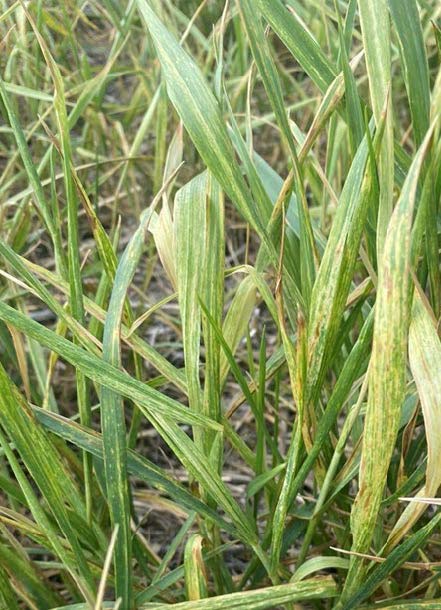 |
Symptoms of wheat streak mosaic (WSM) in a farmer field in Grady County, OK (photo taken on April 13, 2022). |
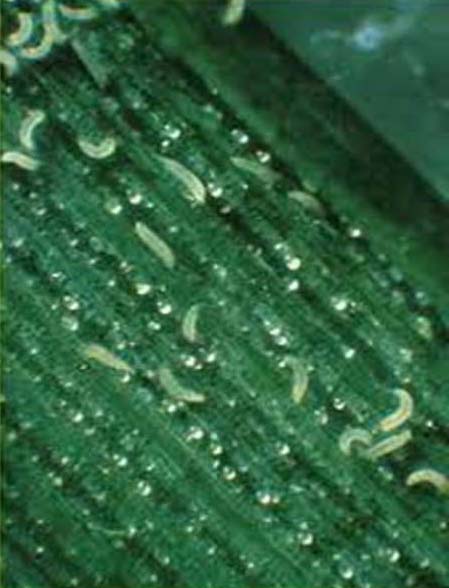 |
Wheat curl mites that transmit WSMV are shown in the picture on the right (photo credit: University of Kentucky). |
Destroy volunteer wheat and grassy weeds: This is critical to reduce the population of mites and aphids that transmit viruses to seedling wheat. Often an infected field of commercial wheat is growing adjacent to a field left fallow during the fall and winter. The fallow field contained abundant volunteer wheat and grassy weeds from which virus vectors spread into the commercial field. Wheat infected in the fall will be severely damaged next spring. Wheat infected in the spring also is damaged, but not as severely as wheat infected in the fall. Hence, it is imperative to control volunteer wheat and grassy weeds in fields left fallow – especially if they are adjacent to commercial wheat fields. For instance, wheat curl mite life span is 7-10 days. Thus, destroying volunteer wheat for a period of at least two weeks prior to planting will greatly reduce mite numbers in the fall.
Over the last seven years, high incidence and severity were reported in Oklahoma in years like 2017 and 2022. In 2022, 57 wheat samples were tested by the Plant Disease and Insect Diagnostic Lab at OSU for presence of mite-transmitted viruses. Of these 57 samples, 17 (30%) tested positive for WSMV and 8 (14%) tested positive for HPV. In 2017, of the 103 tested samples, 69 (67%) tested positive for WSMV and 22 (21%) tested positive for HPV. Later planting date in conjunction with limiting the green bridge can help reduce the incidence and severity of mite-transmitted viruses in Oklahoma.
Seed treatment with a systemic insecticide that contains imidacloprid or thiamethoxam can also be used to control aphids that transmit barley yellow dwarf virus. Seed treatment using insecticides is not effective in controlling curl mites or the mite-transmitted viruses. Seed treatments using fungicides and later planting can reduce root rots such as common root rots and Fusarium root rots that were prevalent and severe during the last two seasons (2022-2023) in multiple wheat fields in Oklahoma (Figure 3). Seed treatment may not necessarily affect root rots in spring, but generally facilitates stand establishment and improves yield. With the lack of varieties with acceptable levels of resistance to root rots, managing root rots is difficult.
| Image | Caption |
|---|---|
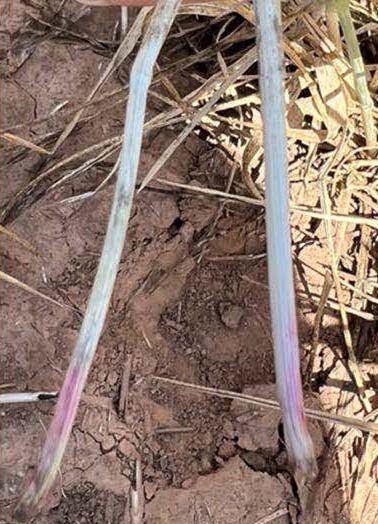 |
Fusarium root, crown and foot rots. |
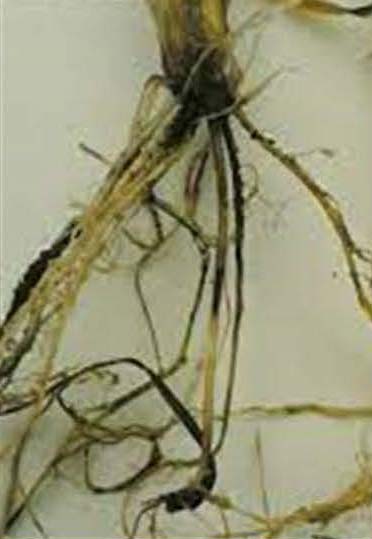 |
Common root rot |
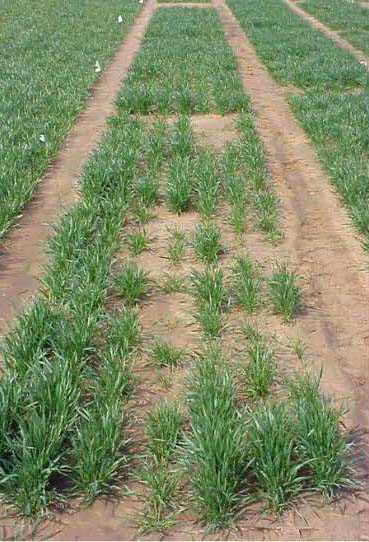 |
Poor stand caused by root rots |
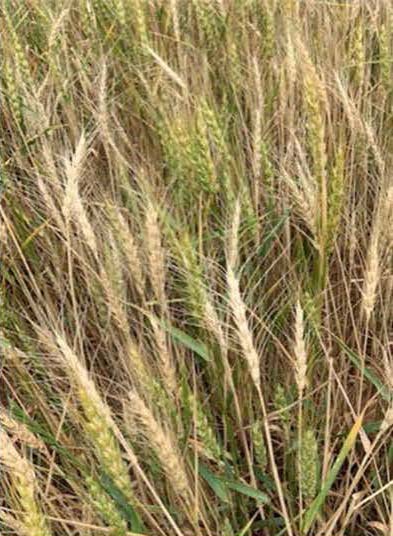 |
White heads caused by root rots. |
Seed treatments using fungicides are also effective to control bunts and smuts, including common bunt (also called stinking smut because of its ‘fishy’ odor) and loose smut (Figure 4). If either common bunt or loose smut was observed in a field last season, grain harvested from such field should not be used as seed this year. In this case, it is strongly recommended to use certified seed. However, if grain harvested from such contaminated fields must be used as seed, seed treatment at a high rate should be applied. For more information on seed treatment options consult the “2023 OSU Extension Agents’ Handbook of Insect, Plant Disease, and Weed Control that should be available with your County Extension Educators. Seed treatment using fungicides can also help control fall foliar diseases such as leaf rust, stripe rust, tan spot, spot blotch, leaf and glume blotch, and powdery mildew.
| Image | Caption |
|---|---|
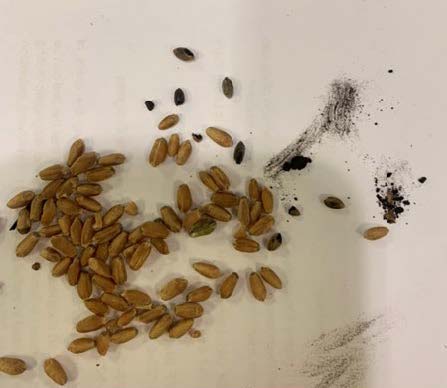 |
Common bunt/stinking smut. |
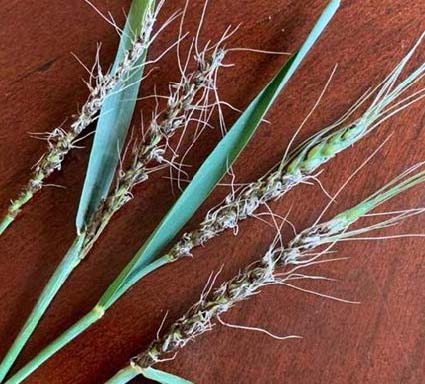 |
Loose smut. |
1-Select disease resistant varieties: One of the most effective and sustainable ways to manage diseases is to grow resistant varieties. Information about OGI’s wheat variety characteristics can be found at https://extension.okstate.edu/programs/wheat-research-and-extension/varieties-characteristics/.

